Embracing Accessibility: AI, Artistic Expression, and Mental Health
- Duskfall Crew

- May 28, 2024
- 5 min read
Updated: Jun 28, 2024
Embracing Accessibility: AI, Artistic Expression, and Mental Health

Introduction:
In today's rapidly evolving digital landscape, the intersection of AI, artistic expression, and mental health is reshaping the way we perceive and engage with art. This article explores the transformative potential of AI in making art more accessible and inclusive for individuals of all backgrounds, abilities, and neurodiverse conditions. By examining how technology intersects with art and mental health, we uncover the diverse ways in which creativity and innovation can enhance well-being and foster understanding.
Please note, this article was in part made by using Chat GPT 3.5: And is in context still being developed. The context of the article is a year or more's worth of academic research and thoughts based on experience and study. Be aware that sections may still change, and this is an ever growing industry and ever growing heated topic.
1. Redefining Artistic Merit: The Role of AI in Creativity
Art has always been a reflection of human creativity and emotion. With the advent of AI, the boundaries of artistic expression are expanding, challenging traditional notions of artistic merit and originality.
AI and Artistic Creation: The emergence of AI in art creation introduces new possibilities and challenges. Through complex algorithms and neural networks, AI can generate visual art, music, literature, and more. This democratization of creativity has sparked debates about the nature of artistry and the role of human intervention in the creative process.
Collaborative Potential: Rather than replacing human creativity, AI often serves as a collaborator, augmenting and enhancing the artistic process. Artists and creators can use AI tools as conceptual aids, exploring new ideas and expanding their creative horizons. Collaborative projects between humans and machines demonstrate the potential for synergy and innovation in the art world.
Accessibility and Inclusivity: One of the most significant impacts of AI in art is its potential to make artistic creation more accessible to a broader range of individuals. For people with disabilities or neurodiverse conditions, AI tools offer new avenues for creative expression. Voice-activated art programs, tactile interfaces, and other assistive technologies empower individuals to engage with art in ways that were previously inaccessible.
As AI continues to evolve, it challenges us to reconsider the boundaries of creativity and artistic merit. By embracing AI as a tool for collaboration and accessibility, we can unlock new possibilities for artistic expression and foster a more inclusive art community.
2. Art as Therapy: Nurturing Mental Health through Creative Expression
Art therapy has long been recognized as a powerful tool for promoting mental health and emotional well-being. Through creative expression, individuals can explore their thoughts, feelings, and experiences in a supportive and therapeutic environment.
The Therapeutic Power of Art: Art therapy offers a unique outlet for self-expression and communication. Through painting, drawing, sculpting, and other creative activities, individuals can process complex emotions, reduce stress, and gain insight into their inner worlds. Artistic expression provides a safe and nonverbal means of exploring and articulating thoughts and feelings that may be difficult to express verbally.
Technology and Accessibility: Advances in technology, including AI, are making art therapy more accessible to diverse populations. Digital platforms and AI tools enable remote therapy sessions, allowing individuals to engage in art therapy from the comfort of their own homes. Moreover, AI-driven assistive technologies cater to the specific needs of individuals with disabilities, facilitating their participation in therapeutic art activities.
Community and Connection: Art therapy fosters a sense of community and connection among participants, creating opportunities for social interaction and support. Group art therapy sessions encourage collaboration, empathy, and self-discovery, promoting healing and resilience in the face of mental health challenges.
By harnessing the therapeutic power of art and technology, we can empower individuals to explore their creativity, cultivate resilience, and enhance their overall well-being. Art therapy serves as a valuable tool for promoting mental health and building supportive communities.
3. Empowering Expression: Artistic Freedom for Individuals with DID and Neurodiverse Conditions
For individuals with Dissociative Identity Disorder (DID) and other neurodiverse conditions, art provides a means of expression and communication that transcends traditional boundaries.
Navigating Neurodiversity: DID and other neurodiverse conditions exist on a spectrum, and not everyone requires a diagnosis to identify as plural. Earth & Dusk, for instance, is managed by two plural individuals—one from a UDD system and the other from a diagnosed DID system. This diversity highlights the spectrum of experiences related to plurality and the importance of recognizing and respecting individual identities.
AI as a Conceptual Tool: AI offers a novel approach to creativity for individuals with DID and neurodiverse conditions. By using AI as a conceptual tool, artists can explore ideas, experiment with different styles and techniques, and overcome limitations imposed by their neurodiversity. AI-driven assistive technologies enable individuals to express themselves creatively in ways that align with their unique strengths and abilities.
Promoting Understanding and Acceptance: Art created by individuals with DID and neurodiverse conditions plays a crucial role in promoting understanding and acceptance within the broader community. Through their creative expression, these artists challenge stereotypes, dispel misconceptions, and foster empathy and compassion. By sharing their stories and perspectives, they contribute to a more inclusive and diverse cultural landscape.
Artistic expression empowers individuals with DID and neurodiverse conditions to share their voices, experiences, and identities with the world. By embracing technology and fostering a supportive environment, we can create opportunities for creative expression and promote acceptance and inclusion for all.
Conclusion: Embracing Accessibility and Inclusivity in the Digital Age
In a rapidly changing digital landscape, the intersection of AI, artistic expression, and mental health presents new opportunities and challenges. By embracing accessibility and inclusivity, we can harness the transformative potential of technology to empower individuals, promote well-being, and foster understanding and connection within our communities.
Redefining Artistic Merit: AI challenges traditional notions of creativity and artistry, opening up new possibilities for collaboration and innovation.
Art as Therapy: Art therapy offers a powerful means of promoting mental health and resilience, supported by advances in technology and AI-driven assistive tools.
Empowering Expression: Art provides a voice for individuals with DID and neurodiverse conditions, promoting understanding, acceptance, and inclusion.
By embracing accessibility and inclusivity in the digital age, we can create a more vibrant, diverse, and interconnected art community. Through collaboration, creativity, and compassion, we can unlock the full potential of AI, art, and technology to enrich our lives and transform our world.
ARTISTIC FREEDOM: Examples
Gallery of Samples from the PonyXL and SDXL Lora set D.I.D. Vaporwave Visions
Disclaimer:
While Earth & Dusk is not sponsored by Civitai, it's important to note that Duskfall of Earth & Dusk, also known as Duskfallcrew or The Duskfall Portal Crew, is currently part of Civitai's paid creator program. However, this article was not financially supported or paid for by Civitai in any way. Neither Civitai's staff nor its other creators are responsible for the content of this article, and any opinions expressed herein are solely those of the author(s).
It is also likely that this article in part will be mirrored on Civitai, but not updated on Civitai, for future updates to this article please be patient and watch this space.










































































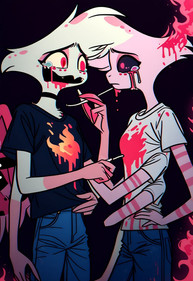

































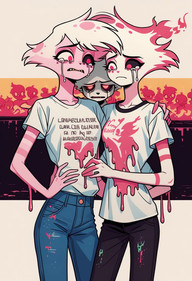






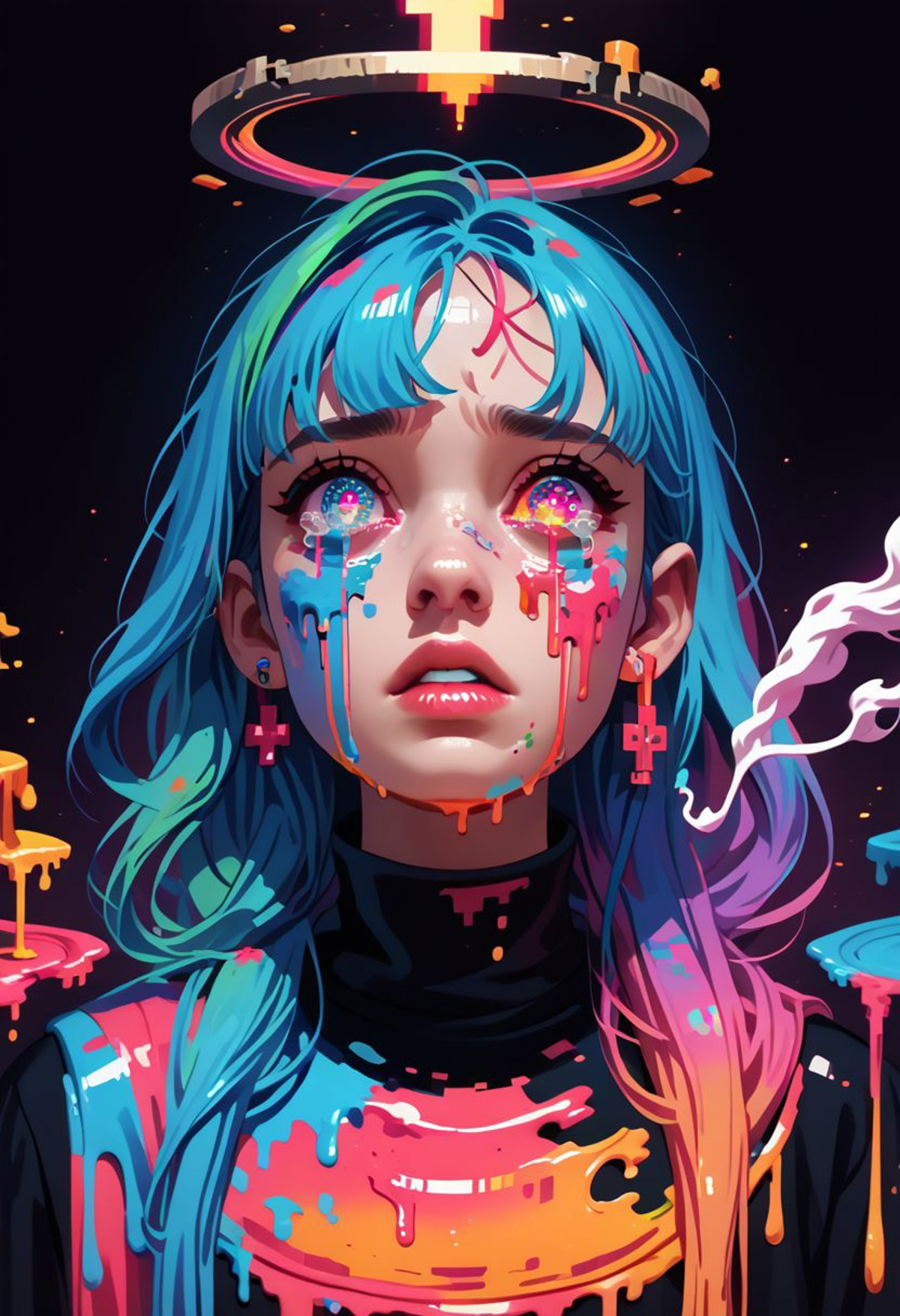

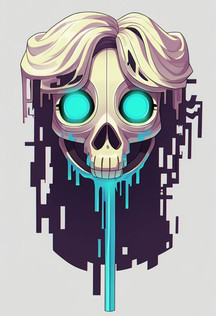

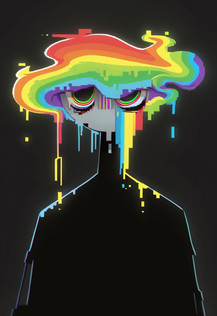









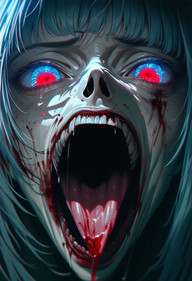







Comments